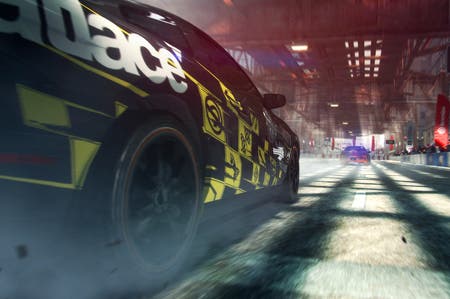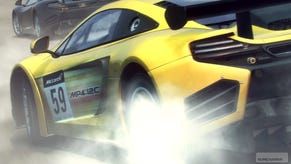Grid 2 Preview: No Assists Please, We're British
Codemasters takes a couple of interesting risks with the return of its tarmac racer.
Grid 2 will be publicly playable for the first time anywhere in the world at this year's Eurogamer Expo, taking place at Earls Court, London, from 27th-30th September. Codemasters will also be presenting a developer session on the Saturday at 3pm called Grid 2: Total Race Day Immersion. Come!
Driving games usually sell themselves either on the dream or the reality - and in the eyes of many racing fans, never the twain shall meet. You're either in the blue corner with Need for Speed, tyres howling and sparks flying as you bend the laws of physics to your will in the service of thrillingly implausible drifts; or you're in the red corner with Gran Turismo and Forza Motorsport, resting the wish-fulfilling promise of virtual car ownership on the granite pedestal of simulation authenticity.
But there is a happy middle ground between simulation and arcade racing - the one occupied for years by the graceful power slides of the sadly departed Project Gotham Racing. Codemasters made a stab for it with 2008's Race Driver: Grid, a lively, grippy and credible motorsport fantasy that won as many fans with its dramatic intensity and trailblazing features (including the first appearance of a rewind button in a racer) as it alienated with its departure from the real-world circuit racing of its TOCA lineage.
It's now taking a second stab with Grid 2, due in summer 2013 for PC, Xbox 360 and PS3. Despite the long gap, it's an unapologetic sequel with a very similar style: race-tuned road cars in fake racing liveries going at it wheel-to-wheel on city streets and racing circuits, all shot in a smoky, cinematic style. In pure gameplay terms, the only major change - or at least, the only one Codemasters is currently willing to discuss - is the addition of high-speed point-to-point races on the open road. But perhaps it's an omission that's more interesting.
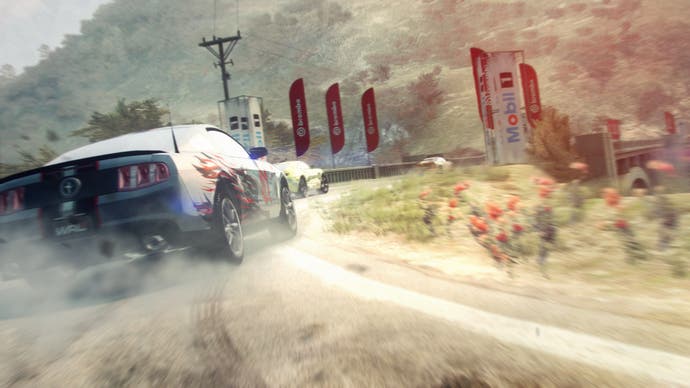
The problem that Codemasters has faced ever since it attempted to broaden its appeal with Grid and Dirt is that its motorsport games need the support of a hobbyist hardcore to succeed, but the majority of players like the idea of simulation racing more than they like the reality. It's not a problem unique to the Midlands developer, of course, and games like Forza have ended up offering a plethora of driving assists and difficulty settings that dial the experience to your ability, but often end up deadening it in the process. Codemasters has set itself a stiffer challenge: deliver a handling model that's accessible and deep, credible and exciting, without any assists or difficulty settings at all.
There's a silly trademarked name for what car handling designer Tim Dearing is doing: TrueFeel. Really, though, it's just a process of hard work and good judgement that starts with raw simulation data for each car, processed by a new physics engine that runs at 1000 Hz. The designers then carefully prune back the cars' more demanding behaviours and ladle in some progressive, controllable drifting "because people find it fun", while attempting to preserve the feel and basic handling characteristics of a particular car. The end result, Dearing says, should be easy for most players to master within a couple of laps, but offer plenty of depth beyond that.
Long-term challenge will mostly come from ascending through Grid 2's four tiers of cars. Although missing the most expensive licences - Porsche, Lamborghini and Ferrari - it looks like a well-curated selection of muscular exotics. You'll start in classics like the 1970s Mach 1 Mustang and BMW E30 M3, then progress through Skylines and modern muscle cars to supercars like the McLaren MP4-12C, track day specials like the wild BAC Mono, and finally outré hypercars like the Pagani Huayra and Koenigsegg Agrea R.
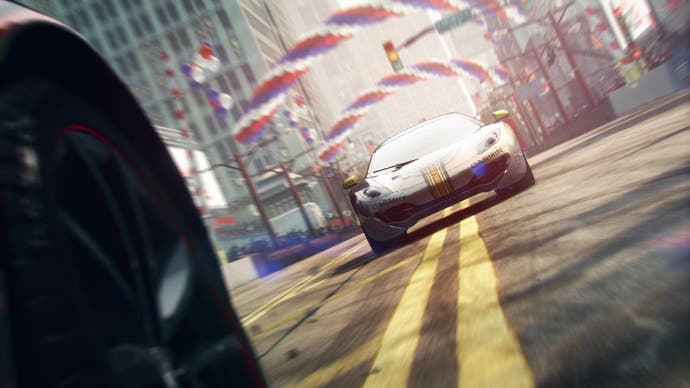
Sitting down with the game - running, extremely handsomely, on high-end PCs - we get the chance to try a Mercedes SL65 AMG in a two-lap street race through the glass canyons of downtown Chicago. Trash blows across the track in the wind, sparks scatter from the L trains above, and a soaring jet etches its contrails across the sky. Art director Nathan Fisher says that Michael Mann is an influence, and it certainly has a hint of the film director's gritty gloss.
As promised, the beastly AMG is very easy to get along with, and within a lap I'm scraping its nose on the barriers in the middle of long drifts that are easy to provoke and recover and don't scrub off too much speed. Grid 2 instantly makes you feel like a Top Gear test driver. But it's not all slick showboating. Study the way the car reacts as you take a bite of kerb, body-roll shifting weight and grip to the outside tyres, and you begin to appreciate that Grid 2's physics engine has serious chops and there may be something to the team's promise of depth within accessibility. Certainly, the goal of a handling model that's consistent and pure as well as approachable for all players is a laudable one.
Taking a modern-day Shelby Mustang for a spin along the winding, forested clifftops of California Coast, we also get to try Grid 2's new discipline, road races. Although it's a one-on-one race, this high-speed point-to-point is more reminiscent of a stage from one of Codemasters' rally games than anything else as you hook your inside wheel in the gutter to slingshot around corners. The Mustang feels appreciably beefier than the Merc, understeering into corners and then snapping into shorter slides.
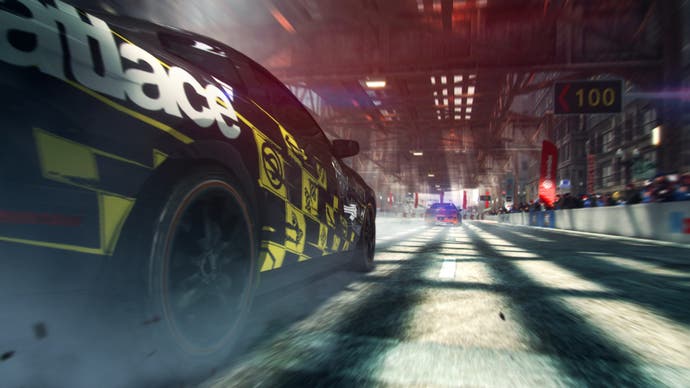
One of Grid's virtues was its pacing and variety - its single-player campaign was a delight, especially compared to the tedious lap grind of some of its rivals - and Codemasters is promising the same for Grid 2. Unfortunately the developers won't talk structure yet, so we'll have to take it on trust, and on the promise of confirmed locations Chicago, California Coast, Paris (with its wide boulevards and rat-runs of narrow, cobbled streets) and the dramatic new Yas Marina racing circuit in Abu Dhabi. (It's easy to guess that the roster of motorsport venues will be influenced by the F1 calendar, given Codemasters' licence.)
There is one facet of the game's structure that the team is willing to share though, and it's another interesting bit of risk-taking. While most driving games aim to provide integrated and seamless online and offline racing, Grid 2's online multiplayer will be completely segregated. It will have its own separate progression system and you won't be able to take cars between the two; the focus will be on customisation and strategic choice, rather than the completism of single-player.
That's as detailed as Codemasters gets, but it's easy to see that the new direction is inspired by Call of Duty's wildly popular model for online multiplayer. It'll be backed up by RaceNet, a community portal accessible through the web and phones; plans for this are vague at best, but I detect hints that it may involve some kind of meta-game elements as well as simple profiles and stat-tracking.
It will be when Codemasters fully reveals its plans for Grid 2's multiplayer that we'll get a clearer sense of the game's prospects. It's clearly a fine sequel that preserves the spirit of a respected game, and it seems to be toeing that delicate line between simulation and arcade racing with as much grace as anything since PGR's demise. But arriving at the very end of a hardware generation and after the extremely promising Forza Horizon and Need for Speed: Most Wanted, it will have its work cut out to woo racers. If it can do what most rivals have failed to and lock players into a compelling, long-term online racing world, though, it could be a different story. Either way, Grid 2 will be a decisive play for Codemasters Racing.
Grid 2 will be publicly playable for the first time anywhere in the world at this year's Eurogamer Expo, taking place at Earls Court, London, from 27th-30th September. Codemasters will also be presenting a developer session on the Saturday at 3pm called Grid 2: Total Race Day Immersion. Come!
